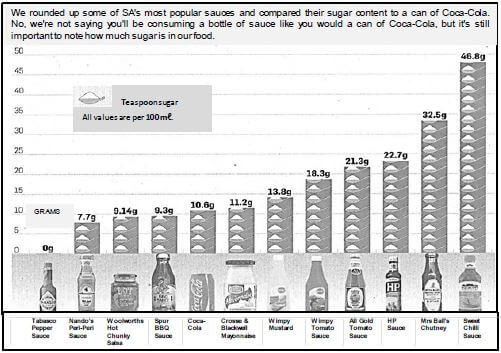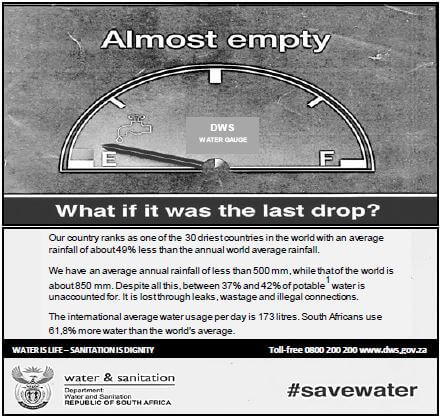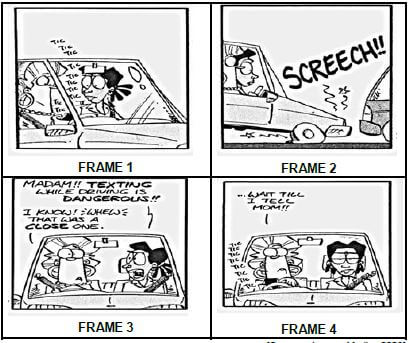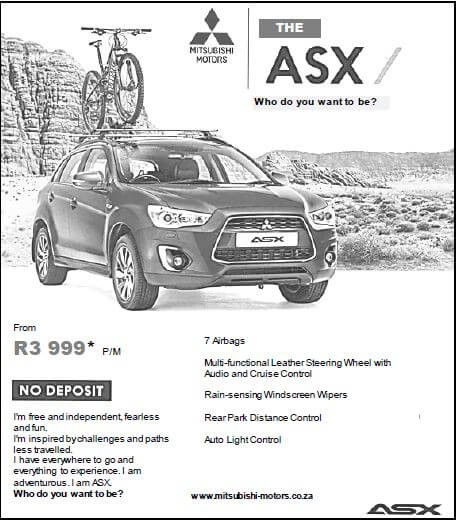ENGLISH FIRST ADDITIONAL LANGUAGE PAPER 1 GRADE 12 QUESTIONS - NSC PAST PAPERS AND MEMOS FEBRUARY/MARCH 2017
Share via Whatsapp Join our WhatsApp Group Join our Telegram GroupENGLISH FIRST ADDITIONAL LANGUAGE
PAPER 1
GRADE 12
NSC PAST PAPERS AND MEMOS
FEBRUARY/MARCH 2017
INSTRUCTIONS AND INFORMATION
- This question paper consists of THREE sections:
SECTION A: Comprehension (30)
SECTION B: Summary (10)
SECTION C: Language (40) - Answer ALL the questions.
- Read ALL the instructions carefully.
- Start EACH section on a NEW page.
- Leave a line between answers.
- Number the answers correctly according to the numbering system used in this question paper.
- Pay special attention to spelling and sentence construction.
- Use the following time frames as a guideline:
SECTION A: 50 minutes
SECTION B: 30 minutes
SECTION C: 40 minutes - Write neatly and legibly.
QUESTIONS
SECTION A: COMPREHENSION
QUESTION 1
Read BOTH TEXT A and TEXT B and answer the set questions.
TEXT A
THE BRAND THAT IS YOU
|
NOTE:
- For one-word answers, write only the question number and the word.
- For multiple-choice questions, write only the question number and the letter (A–D) of the correct answer.
1.1 Name ONE beverage and ONE media brand mentioned in the passage. (2)
1.2 Why has the writer referred to big brands in line 1? (2)
1.3 The writer has used the words 'Right? Wrong!' next to each other in line 6. Why has he done this? (2)
1.4 What aspects of your personal brand will influence people's opinion of you? State TWO points. (2)
1.5 Refer to paragraph 3.
1.5.1 How, according to Webster, do values contribute to personal branding? (2)
1.5.2 Discuss why Nike is such a successful brand. (2)
1.6 Choose the correct answer to complete the following sentence: The word 'choreographer' (line 25) means a person who trains …
- actors.
- dancers.
- singers.
- comedians. (1)
1.7 Why, according to Khabonina Qubeka, is it not always good to have role models? (2)
1.8 What is your view on Pula Matsaung's advice on building a personal brand? (2)
1.9 Pick out a single word from the passage that means the same as 'posture, style and dress sense' (paragraph 7). (1)
1.10 Explain what is meant by 'like-minded people' (paragraph 9). (1)
1.11 Why has the writer decided to use the advice of Timothy Maurice Webster, Khabonina Qubeka and Pula Matsaung in this article? (2)
1.12 The writer uses a conversational style of writing in this article. Explain how he does this AND discuss how it is effective. (3)
TEXT B 
[Source: CITY PRESS, 29 March 2015]
1.13 Which TWO sauces have the closest sugar content to that of a can of Coca-Cola? (2)
1.14 Which sauce contains no sugar? (1)
1.15 If you are on a low-sugar diet, why should you avoid Mrs Ball's Chutney? (1)
1.16 Discuss whether this graph is effective in conveying an important message. (2)
TOTAL SECTION A: 30
SECTION B: SUMMARY
QUESTION 2
South Africa is experiencing electricity shortages.
Read the passage (TEXT C) below and list SEVEN electricity-saving tips that South Africans can follow in their households.
INSTRUCTIONS
- Your summary must be written in point form.
- List your SEVEN points in full sentences, using no more than 70 words.
- Number your sentences from 1 to 7.
- Write only ONE point per sentence.
- Use your OWN words as far as possible.
- Indicate the total number of words you have used in brackets at the end of your summary.
TEXT C
USE ELECTRICITY WISELY We enjoy a very comfortable life by using electric energy but we must also be aware that energy is a limited resource. Without electricity, you would not be able to use your cellphone or grab a cold drink from the refrigerator. [Source: SATYAGRAHA, February 2015] |
TOTAL SECTION B: 10
SECTION C: LANGUAGE
QUESTION 3: ANALYSING AN ADVERTISEMENT
Study the advertisement (TEXT D) below and answer the set questions.
TEXT D 
[Source: Indwe, December 2015]
GLOSSARY:
1potable: safe to drink
3.1 Who is the advertiser? (1)
3.2 Discuss ONE verbal and ONE visual technique that the advertiser uses to capture the reader's attention. (2)
3.3 Study the following sentence and give a synonym for the underlined word: We have an average annual rainfall of less than 500 mm. (1)
3.4 Rewrite the following sentence by giving the correct form of the word in brackets:
South Africa is (dry) than many other countries. (1)
3.5 State the part of speech of the underlined word in the following sentence: The international average water usage per day is 173 litres. (1)
3.6 Why has the advertiser included a toll-free number? (2)
3.7 Discuss whether statistics are effective in bringing across the message of the advertisement. (2)
[10]
QUESTION 4: ANALYSING A CARTOON
Read the cartoon (TEXT E) below and answer the set questions.
TEXT E
MADAM AND EVE 
[Source: Jacana Media, 2009]
NOTE: In this cartoon, the woman driving the car is Madam and the woman seated next to her is Eve.
4.1 Explain what Madam is doing in FRAME 1. (2)
4.2 Discuss TWO techniques that the cartoonist used in FRAME 2 to indicate that Madam has slammed on the brakes. (2)
4.3 Why do some of Eve's words in FRAME 3 appear in bold print? (1)
4.4 Consider the cartoon as a whole and discuss the irony in FRAME 4. (3)
4.5 In your view, how effective is this cartoon in conveying an important message? Substantiate your answer. (2)
[10]
QUESTION 5: LANGUAGE AND EDITING SKILLS
5.1 Read the passage (TEXT F) below, which has some deliberate errors, and answer the set questions.
TEXT F
TABLETS REPLACE THE BUCKET AND SPADE
|
GLOSSARY:
¹tablet: a small hand-held computer with a touch screen
5.1.1 Correct the SINGLE error in each of the following sentences. Write down ONLY the question numbers and the words you have corrected.
- Buckets and spades will soon be more common in musuems than on the beach. (1)
- The average child will spend two hours a day staring in a small screen. (1)
- That sounds bad, if you want them to enjoy new experiences at the destination youve taken them to. (1)
- Gadgets has become an essential part of the holiday checklist. (1)
5.1.2 Rewrite the following sentence in the future continuous tense:
Some children will spend more than four hours playing with gadgets. (2)
5.1.3 Change the following sentence into a tag question:
That sounds bad. (2)
5.1.4 Give an antonym for the underlined word in the following sentence:
Gadgets distract children while they are travelling. (1)
5.1.5 Study the following sentence and replace the underlined slang word with a formal one:
Even children of six and under will pack tech worth R7157. (1)
5.1.6 Choose the correct answer to complete the following sentence: The word 'invaluable' means having …
- no cost.
- some importance.
- great value.
- no meaning. (1)
5.1.7 Rewrite the following sentence in reported speech:
Stephen said, 'There's no doubt these buckets and spades will soon be forgotten.' (4)
5.2 Study the text (TEXT G) below and answer the questions.
TEXT G 
[Adapted from The Times, 30 April 2015]
5.2.1 Study the following sentence:
The cost of the car is R3 999 P/M.
Write out P/M in full. (1)
5.2.2 Give the correct form of the word in brackets:
I enjoy the (independent) that I am given. (1)
5.2.3 Rewrite the following sentence in the negative:
The car has seven airbags. (1)
5.2.4 Combine the following sentences into a single sentence:
The car has airbags. The airbags will protect the occupants in an accident. (1)
5.2.5 Rewrite the following sentence in the passive voice:
The driver used the windscreen wipers. (1)
[20]
TOTAL SECTION C: 40
GRAND TOTAL: 80